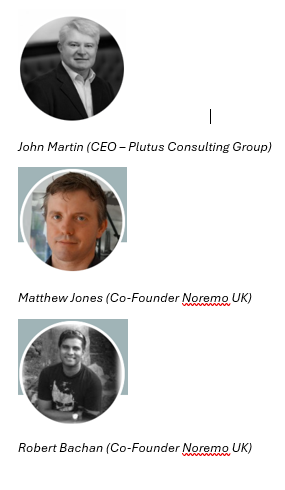The Value Creation Paradox in Private Equity: Why Private Equity's Greatest Strength Is Also Its Biggest Risk

-The industry's unspoken reality: Value destruction remains PE's biggest taboo, yet understanding the tension between creation and destruction separates top performers from underperformers
-The operational revolution: McKinsey data shows operational improvements now drive ~50% of value creation versus just 23% from multiple expansion, marking a fundamental shift from financial engineering to operational excellence
-The strategic imperative: Top PE firms institutionalise "fault-finding" processes to identify potential failures before implementation, combining optimism about change with paranoia about unintended consequences
-Bottom line for PE professionals: With easy leverage gains behind us and entry multiples elevated, mastering the creation-destruction dynamic through institutional memory, operational capabilities, and iterative learning will define the next decade's winners
Picture this: You have just closed a promising mid-market acquisition. The target company has solid fundamentals, a decent market position, and what appears to be significant operational upside.
Fast-forward 18 months, and you are staring at a portfolio company that's bleeding cash, management is in revolt, and your LPs are asking uncomfortable questions during the quarterly call.
Sound familiar?
Let us be honest, this scenario touches on the industry's biggest taboo: value destruction.
These are the dirty words that no PE firm ever likes to talk about.
Publicly admitting to failure in our world is tantamount to commercial suicide, which, let us face it, makes sense in a highly competitive environment staffed by serial over-achievers.
But here is the uncomfortable truth: value destruction and value creation are like two forces in constant dynamic interplay, never far away from each other.
They are intimately entwined, sometimes thought of as the yin and yang of business.
Understanding this tension is not just academic; it is the defining characteristic that separates successful PE firms from underperformers.
The Red Corner: Value Destruction - What We Don't Talk About
"Value destruction" is one of those ephemeral phrases that can mean many things depending on time, circumstance, and point of view.
In our context, it is anything that adversely affects the financial performance of a PE fund's portfolio investments over time. And it happens in ways that are often more nuanced, and more common, than the spectacular failures that make headlines.
Value destruction can strike in three distinct ways:
Through inaction or negligence: Think about the portfolio company still running legacy software systems without proper cybersecurity patches. One ransomware attack later, and you are looking at operations shutdown, lost sales, and potentially millions in recovery costs.
It is death by a thousand digital cuts.
Through external forces beyond our control:
Remember when China-to-Europe container shipping costs quadrupled during the pandemic? Or consider German construction giant Knauf, whose Ukrainian factory was destroyed by Russian bombs, forcing a €150 million investment in rebuilding.
These were not foreseeable business risks’ they were black swan events that rewrote entire investment theses overnight.
Through the unintended consequences of our own decisions:
Here is where it gets personal.
Load a portfolio company with excessive debt without adequate hedging, and when interest rates move against you, every dollar of excess cash you planned to reinvest in growth gets consumed by the interest payments instead.
Take the case of Toys"R"Us. KKR, Bain Capital, and Vornado's $6.6 billion buyout in 2005 loaded the retailer with debt just as e-commerce was reshaping retail. The leverage that was supposed to amplify returns instead amplified the company's inability to invest in digital transformation and compete with Amazon. When the music stopped in 2017, 33,000 jobs vanished along with a retail icon.
But here is what keeps us up at night, it is usually not one catastrophic decision.
Value destruction is typically the cumulative aggregation of value-destroying events, small missteps that compound over time until they become existential threats.
The Blue Corner: The Evolution of Value Creation
But here is where it gets interesting.
The best PE houses are not just avoiding value destruction; they are completely rewriting the playbook around systematic value creation. And unlike value destruction, which can happen in an instant, value creation is typically the cumulative aggregation of value-creating initiatives deployed strategically over time.
We invest in year one for returns in years two, three, and four. It's a patient, disciplined approach that recognises the fundamental truth Adam Smith articulated in The Wealth of Nations back in 1776: "It is not from the benevolence of the butcher, the brewer, or the baker, that we expect our dinner, but from their regard to their own interest."
Sustainable value creation is not philanthropy, it's enlightened self-interest executed at scale.
Take Vista Equity Partners' approach to software companies. Rather than relying purely on financial engineering, they have built what amounts to an internal consulting firm with over 400 operational professionals. Their "Vista Best Practices" methodology has become so refined that portfolio companies regularly see 20-30% EBITDA margin improvements within the first year. That is not leverage that's operational excellence at scale.
Or consider Leonard Green & Partners' work with Whole Foods before Amazon's acquisition. Instead of loading the grocer with debt and hoping for the best, they focused on supply chain optimisation, private label development, and strategic store locations.
The result?
A 40% IRR when Amazon paid $13.7 billion for the business.
The data tells the story: historical research by Capital Dynamics and the Technical University of Munich examining over 700 deal exits worldwide found that operational improvements accounted for more than half of all value created in private equity transactions, while leverage made up less than a third. (Source: https://tbmcg.com/resources/blog/private-equity-operational-improvements-account-half-value-creation/)
We're witnessing a fundamental shift from financial engineering to operational excellence.
Modern value creation is becoming increasingly sophisticated:
Digital transformation at scale:
Leading PE firms are building internal digital capabilities that rival management consultancies. They are not just advising on digital strategy, they are implementing ERP systems, building data analytics capabilities, and driving e-commerce transformations.
Sector-specific expertise:
The days of generalist PE are numbered.
The winners are developing deep vertical knowledge. Think about how Advent International has built unparalleled expertise in healthcare services, or how Blackstone's tactical opportunities team leverages cross-portfolio insights in real estate and credit.
ESG as a value driver:
Environmental, social, and governance considerations are not just risk mitigation anymore, they are alpha generation. Companies with strong ESG profiles command higher multiples and attract better management talent.
The Strategic Imperative: Winning Without Fighting
Here is something that might surprise you: the best approach to managing this tension is not newer or more sophisticated than we think.
Sun Tzu, writing The Art of War in 6th Century BCE, declared that "supreme excellence consists in breaking the enemy's resistance without fighting." The best generals achieve their objectives through foresight, planning, and positioning, not through brute force.
The same principle applies to private equity.
Nobody can predict the exact future course of events, but we can prepare ourselves and our portfolio companies better to meet the challenges of the unexpected and navigate a route to success. In investment terms, we can improve the probability that returns exceed the cost of capital by reasonable margins in the medium term.
The tension between creation and destruction is not something to resolve, it is something to master strategically.
The best PE professionals we know live in this tension every day.
They are simultaneously optimistic about their ability to drive change and paranoid about all the ways those changes could backfire.
Consider Apollo Global Management's approach to portfolio company governance.
They have institutionalised what they call "fault-finding", systematic processes to identify what could go wrong with their value creation plans before implementation.
It is not pessimism; it is disciplined preparation for the reality that good strategies can have bad outcomes.
What This Means for Your Next Deal
As private equity professionals, we need to get comfortable with this paradox rather than pretending it does not exist. The firms that will outperform over the next decade will not be those that avoid risk, they will be those that understand and actively manage the tension between creation and destruction.
Practically, this means:
Building institutional memory:
Your firm's most valuable asset is not your deal flow; it is your understanding of what works and what does not across different situations. Are you systematically capturing these insights?
Investing in operational capabilities:
The days of purely financial PE are over. If you are not building operational expertise, you are competing with one hand tied behind your back.
Embracing iterative improvement:
The best value creation plans evolve rapidly based on real-world feedback. Are your portfolio companies learning organisations, or are they executing static playbooks?
The private equity industry has matured dramatically over the past two decades. The easy money from leverage and multiple expansion is largely behind us. What separates the winners from the also-rans is not just the ability to create value, it is the wisdom to recognise when those same value-creation levers might destroy it.
This is not a zero-sum game where one party's gain equals another's loss.
Value creation and destruction exist in dynamic interplay, creating both virtuous circles of creation and vicious circles of destruction. The firms that master this dynamic, that understand when to push forward aggressively and when to hedge defensively, will be the ones that outperform over the next decade.
That tension is not going away.
In fact, as competition intensifies and entry multiples remain elevated, it is only going to get more pronounced. The question is not whether you will face this paradox, it is whether you will master it before it masters you.
Contributors


Member discussion